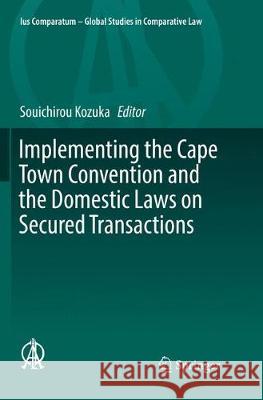Implementing the Cape Town Convention and the Domestic Laws on Secured Transactions » książka
topmenu
Implementing the Cape Town Convention and the Domestic Laws on Secured Transactions
ISBN-13: 9783319835273 / Angielski / Miękka / 2018 / 380 str.
Implementing the Cape Town Convention and the Domestic Laws on Secured Transactions
ISBN-13: 9783319835273 / Angielski / Miękka / 2018 / 380 str.
cena 586,33 zł
(netto: 558,41 VAT: 5%)
Najniższa cena z 30 dni: 578,30 zł
(netto: 558,41 VAT: 5%)
Najniższa cena z 30 dni: 578,30 zł
Termin realizacji zamówienia:
ok. 20 dni roboczych.
ok. 20 dni roboczych.
Darmowa dostawa!
Kategorie:
Kategorie BISAC:
Wydawca:
Springer
Seria wydawnicza:
Język:
Angielski
ISBN-13:
9783319835273
Rok wydania:
2018
Wydanie:
Softcover Repri
Ilość stron:
380
Waga:
0.54 kg
Wymiary:
23.39 x 15.6 x 2.06
Oprawa:
Miękka
Wolumenów:
01
Dodatkowe informacje:
Wydanie ilustrowane











